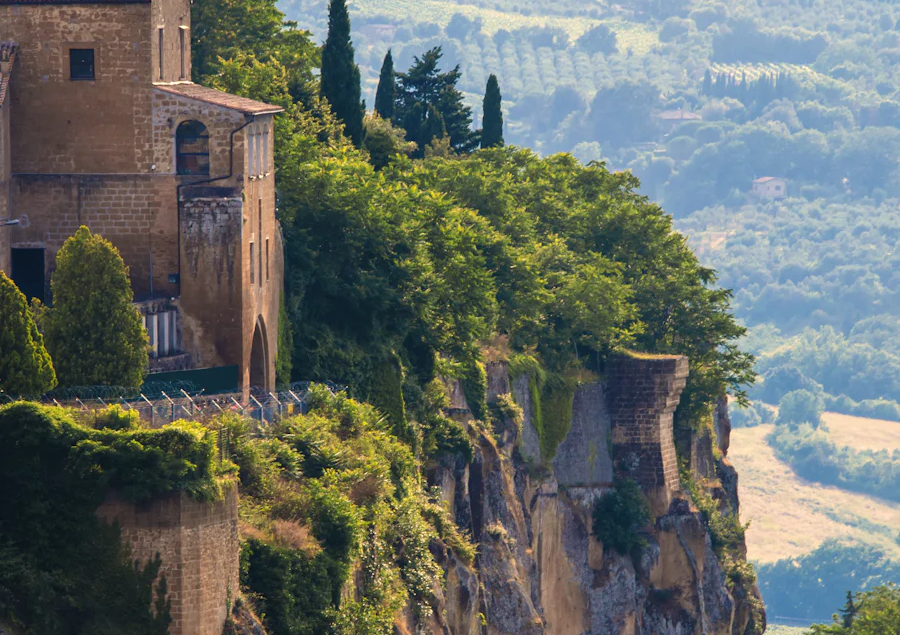Visitor Perspective by Palazzo Misciattelli: #2, the Orvieto Underground
In honour of the upcoming 2025 Jubilee, Palazzo Misciattelli is delighted to introduce a series of posts on all the sites included in the Orvieto Carta Unica, from the visitor’s perspective!
#2, the Orvieto Underground
Exploring the Orvieto Underground: A Journey Through Ancient History
Beneath the charming streets of Orvieto lies a hidden world waiting to be discovered. The Orvieto Underground, a vast network of tunnels, caves, and passageways, offers a fascinating glimpse into the town’s ancient past. A guided tour of the Orvieto Underground is an exciting experience to see the remains of an old olive oil mill, Medieval throws, and dovecotes. For travelers eager to delve into history, this subterranean adventure is a must-see, revealing secrets that date back to Etruscan times and span centuries of human ingenuity and adaptation. The Orvieto people call this underground city the Sotterranea, which means underground.

Photo credit: liveorvieto.com and modo
Photo of real Carta Unica – digital copy instead is easier to buy and maintain! Good for one year.

A Historical Overview
Orvieto’s underground labyrinth was carved into the volcanic tuff rock upon which the town is built. The origins of these tunnels can be traced back to the Etruscans, who settled in Orvieto around the 9th century BCE. Over the centuries, these early excavations were expanded and adapted by the Romans, medieval inhabitants, and Renaissance builders, each leaving their mark on the subterranean landscape.
The Etruscan Legacy
The Etruscans, renowned for their engineering skills, began the process of tunneling into the soft tuff rock. They created wells and cisterns to secure a reliable water supply and carved out storage spaces for food and wine. These early tunnels reflect the ingenuity of the Etruscan civilization and their ability to adapt to the challenging topography of Orvieto.

Roman Influence and Expansion
Following the Etruscans, the Romans continued to develop the underground network. They constructed more elaborate systems of cisterns and aqueducts to meet the needs of a growing population. The Romans also expanded the tunnels for commercial purposes, using them for storage and as workshops.
Medieval and Renaissance Adaptations
During the medieval period, the underground spaces of Orvieto took on new roles. Residents used the tunnels for defensive purposes, creating escape routes and hiding places during times of conflict. The labyrinth also served as a place for artisanal workshops, where craftsmen could work safely away from the turmoil above ground.
In the Renaissance era, the tunnels were further adapted for more sophisticated uses. Noble families and wealthy residents expanded their underground estates, creating wine cellars, olive oil mills, and storerooms. These adaptations showcase the continuity of human use and ingenuity over millennia.

Visiting Orvieto Underground: Tips to Enhance Your Visit
- Opening Hours: The booking and departure office is open 10:30 AM–12:30 PM, 3:30–5:30 PM Monday through Friday, and 11 AM–12:30 PM, 4–5:30 PM Saturday through Sunday.
- Admission: The tour fee is € 8,00 for the museum, however, there are combined tickets that include entry to the Duomo and other nearby attractions are also available.
- Touring: You must book a guided tour to visit Orvieto Underground, during peak tourist season it is advised to book in advance. Tours are available in multiple languages, be sure to sign up for the one best suited for you!
- Accessibility: The Orvieto Underground ground tour requires the use of many narrow staircases and walking along uneven terrain. Be aware that people who are claustrophobic have found this space difficult.
- Weather Consideration: The temperature underground remains relatively cool, making it a pleasant escape during the hot summer months.
- Location: The booking and departure office is located across from the Duomo of Orvieto, roughly a 5 walk from Palazzo Misciatteli towards the historic center of town.

Palazzo Misciattelli is a small boutique hotel, an urban haven of contemporary luxury and ancient tradition, your exclusive retreat nestled atop the glorious clifftop city of Orvieto. All sites on the Carta Unica ticket are reachable within a 5-15 minute walk from the Palazzo.
Located halfway between Florence and Rome, the luxury residences are the perfect base for exploring Umbria, Tuscany, and the surrounding Unesco countryside.
Minutes by foot from the breathtaking Duomo and city center, the Palazzo is still privately owned by an ancient aristocratic Italian family. The four-story Palazzo spans 3000 years of history with visible Renaissance and Medieval elements atop Etruscan foundations.
Each luxury residence features opulent decor, sumptuous furnishings, and private living and dining areas. Boasting private gardens and terraces with glorious views, the Palazzo offers a sauna, plunge pool/jacuzzi, fitness room, roof terrace, and elevator. Guests have special privileges at the owner’s countryside properties where they can visit truffle forests, vineyards, and olive groves.

The Carta Unica is a visitor ticket available for purchase online or in the ticket offices of Orvieto, granting access to many important sites in the city. Very few people are able to see all of the sites it offers in a stay of 3-4 days. Can you?

